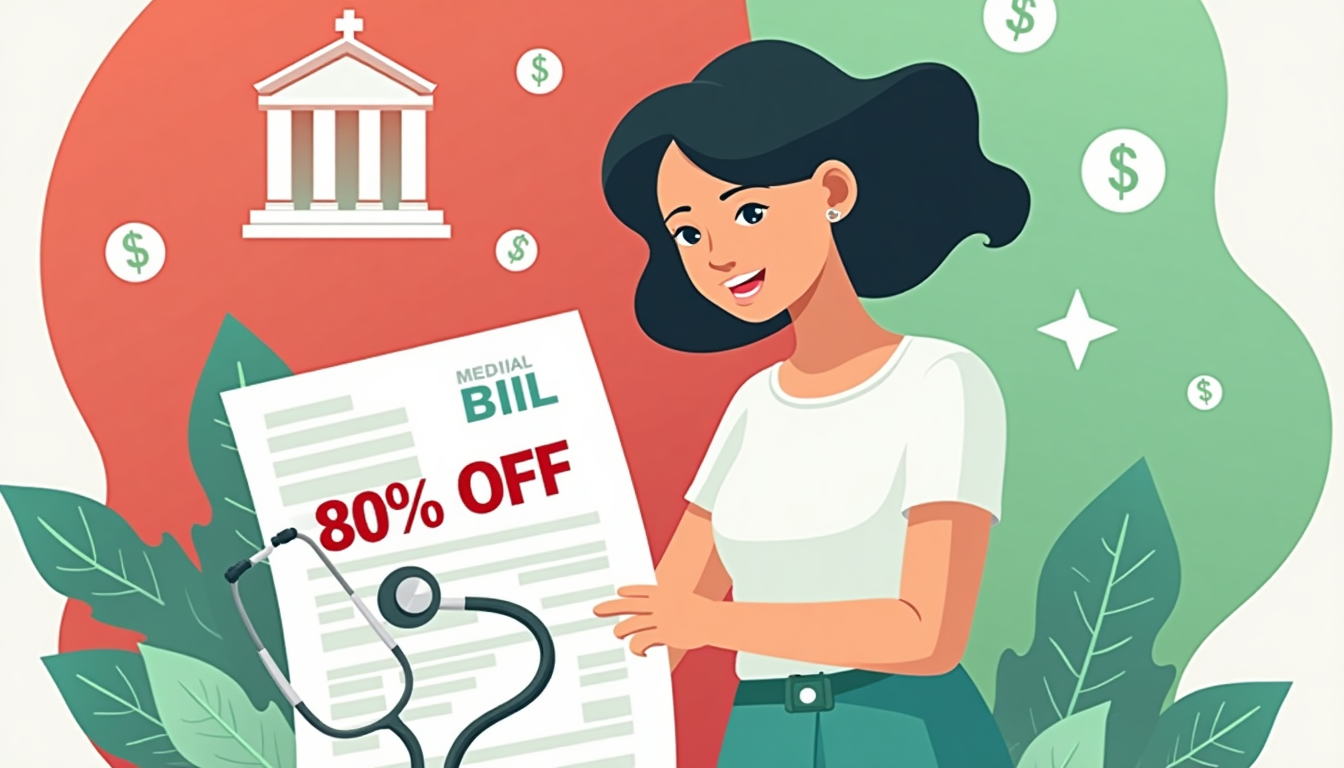Hospital Financial Assistance Programs: Your Guide to Qualifying and Applying for Charity Care
By Jasmine Washington, Patient Advocate & Healthcare Navigator
Introduction: The Hidden Lifeline for Medical Bills
Imagine this: You receive a $5,000 hospital bill. Your chest tightens. Do you drain savings? Skip groceries? Delay follow-up care? You’re not alone. 40% of Americans carry medical debt averaging $729, with communities of color facing double the burden [1]. Yet $14 billion in hospital bills go unclaimed annually by patients who already qualify for financial assistance [2].
As a healthcare navigator, I’ve helped patients discover they were eligible for charity care despite initial confusion. Let’s demystify these programs, eligibility criteria, and how to advocate for yourself.
What Are Hospital Financial Assistance Programs?
The Basics
Hospital financial assistance programs (often called charity care) provide free or discounted care to patients who can’t afford medical bills. Nonprofit hospitals are required by law to offer these programs under the Affordable Care Act (ACA), but eligibility rules vary [3].
Key facts:
- 94% of nonprofit hospitals offer charity care, but only 56% explain it clearly in billing documents [2].
- Many programs cover 100% of costs for households earning ≤200% of the federal poverty level (FPL) [4].
- Insured patients may qualify for copay assistance if bills exceed 10% of their income [5].
Who Qualifies for Financial Assistance?
Income Guidelines: More Flexible Than You Think
Eligibility often extends beyond poverty-level incomes.
| Federal Poverty Level (2024) | Income for 4-Person Household | Coverage |
|---|---|---|
| 200% FPL | $62,400 | Full bill forgiveness |
| 300% FPL | $93,600 | Sliding scale discounts |
| 400% FPL | $124,800 | Copay assistance |
Example: Maria, a teacher earning $52,000, qualified for an 80% reduction on her $7,000 ER bill under her hospital’s 300% FPL policy.
You may qualify if:
- Medical debt exceeds 10% of annual income [5]
- You’ve experienced job loss or reduced hours
- You have high out-of-pocket costs despite insurance
Special Considerations
- Underinsured patients: 67% of Medicare beneficiaries delay care due to costs [6]. Many hospitals offer copay grants for chronic conditions.
- LGBTQIA+ communities: Face higher financial strain due to healthcare discrimination [7].
- Immigrant families: Some states protect patients regardless of immigration status [8].
How to Apply for Charity Care: A Step-by-Step Guide
1. Locate Your Hospital’s Policy
Action: Search “[Hospital Name] + financial assistance policy” online or check billing statements. Nonprofit hospitals must provide this information [3].
Tip: Look for terms like “community benefit program” or “uncompensated care.”
2. Prepare Your Documents
Common requirements:
- Recent pay stubs or tax returns
- Proof of government assistance (SNAP, Medicaid)
- Hardship letter (if unemployed)
Key: 24% of applications are denied due to incomplete paperwork [9]. Request a checklist from the billing department.
3. Submit Your Application
- Deadlines: Vary from 30 days to 1 year post-discharge. Apply even if late—hospitals often make exceptions.
- Submission: Use electronic forms where available.
4. Follow Up Strategically
- Call weekly for updates.
- Escalate to a patient advocate if denied. Persistence pays: 42% of appeals succeed with follow-up [10].
Overcoming Common Challenges
1. “We Don’t Offer Financial Help”
Truth: Nonprofit hospitals risk losing tax-exempt status if they lack charity care programs. Report denials to your state’s attorney general [3].
2. “Your Income Is Too High”
Solution: Appeal with a hardship letter detailing:
- Childcare or dependent care costs
- Existing debts (e.g., student loans)
- Medical expenses from other providers
Success story: James, a mechanic earning $68k, had $12k in surgery bills waived after proving his son’s insulin costs consumed 30% of his income.
3. Language or Disability Barriers
Your rights:
- Hospitals must provide free translation services and ADA-compliant forms [11].
- Advocacy groups like Dollar For offer multilingual application help [12].
Self-Advocacy Strategies
Effective Scripts for Billing Departments
- “Can you confirm this hospital complies with IRS charity care requirements under Section 501(r)?”
- “I request presumptive eligibility screening based on my Medicaid/SNAP enrollment.”
Know Your Legal Protections
Recent reforms:
- Federal: Hospitals must screen all patients for financial assistance eligibility [3].
- State-level: Some states prohibit medical debt from affecting credit scores [13].
Partner With Advocates
Organizations like LowMedBill.com can:
- Review bills for errors (up to 80% contain mistakes [14])
- Negotiate payment plans
- Appeal wrongful denials
Why Charity Care Matters Beyond Your Wallet
Medical debt harms public health:
- 31% of cancer patients skip treatment due to costs [15]
- Rural communities lose critical services like ERs [16]
- 56% of LGBTQIA+ patients ration medications [7]
Your application helps hold hospitals accountable. After policy reforms, Mayo Clinic forgave $11 million in patient debt [10].
How to Get Help Applying
Navigating charity care can feel overwhelming. Services like LowMedBill.com assist by:
- Translating policies into plain language
- Submitting paperwork with deadline tracking
- Negotiating bills if you don’t qualify
Recent win: A client with stage 4 breast cancer had $83,000 in copays waived after proving her hospital misapplied its 400% FPL policy.
Take Action Today
Remember:
- Apply even if insured—many programs cover copays up to 400% FPL [4].
- Appeal denials—most succeed with persistence [10].
- Charity care is your right at nonprofit hospitals.
First step: Locate the “financial assistance” section on your bill. If missing, email:
“Per IRS guidelines, please send your charity care policy and application within 3 business days. I request assistance under Section 501(r).”
Relief starts with one click or call.
References
[1] Kaiser Family Foundation. (2023). Medical Debt in the U.S.. https://www.kff.org/health-costs/report/medical-debt-in-the-us/
[2] Health Affairs. (2024). Charity Care Spending by Nonprofit Hospitals. https://www.healthaffairs.org/doi/10.1377/hlthaff.2023.01435
[3] CMS. (2024). Requirements for Tax-Exempt Hospitals. https://www.cms.gov/charitycare
[4] HHS. (2024). Federal Poverty Guidelines. https://www.hhs.gov/guidelines
[5] JAMA Network. (2023). Out-of-Pocket Healthcare Costs. https://jamanetwork.com/journals/jama/fullarticle/2813881
[6] AHRQ. (2023). Healthcare Access Disparities. https://www.ahrq.gov/data/
[7] NIH. (2024). LGBTQ+ Health Disparities. https://www.nih.gov/lgbtq-health
[8] CMS. (2023). State Medicaid Policies. https://www.cms.gov/medicaid/state-resources
[9] FTC. (2024). Medical Billing Rights. https://www.ftc.gov/medicalbilling
[10] Kaiser Family Foundation. (2024). Hospital Charity Care Reforms. https://www.kff.org/hospital-reforms
[11] HHS. (2024). Language Access in Healthcare. https://www.hhs.gov/civil-rights
[12] Dollar For. (2024). Charity Care Assistance. https://www.dollarfor.org
[13] CFPB. (2023). Medical Debt and Credit Reports. https://www.consumerfinance.gov/medical-debt
[14] JAMA Network. (2022). Hospital Billing Errors. https://jamanetwork.com/journals/jama/fullarticle/2797140
[15] NIH. (2023). Cancer Treatment Adherence. https://www.nih.gov/cancer-costs
[16] AHRQ. (2024). Rural Healthcare Access. https://www.ahrq.gov/rural-health




